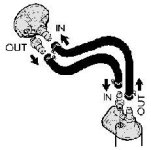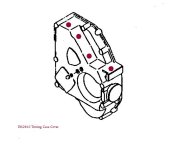California, thanks for the reply, but oil return from the turbo has no pressure. Return to crankcase if via gravity only. Oil feed line is under pressure so I just tapped into the oil sender unit. Banjo fitting is jetted so turbo will not scavange too much oil pressure.
Given sealed bearings in turbo and oil running to oil pan under oil level the "siphon" action could cause turbo seals to fail early. It would be like putting your thumb over the end of a garden hose full of water and have the other end of the hose not leak water unless you released your thumb. I small vent tube to atmosphere will prevent any vacuum and not put any undue stress on seals.
I hear what you are saying about the banjo idea on the oil drain. I just cannot figure out any other way, short of drilling and tapping a hole in block which I will not do.
Given sealed bearings in turbo and oil running to oil pan under oil level the "siphon" action could cause turbo seals to fail early. It would be like putting your thumb over the end of a garden hose full of water and have the other end of the hose not leak water unless you released your thumb. I small vent tube to atmosphere will prevent any vacuum and not put any undue stress on seals.
I hear what you are saying about the banjo idea on the oil drain. I just cannot figure out any other way, short of drilling and tapping a hole in block which I will not do.

